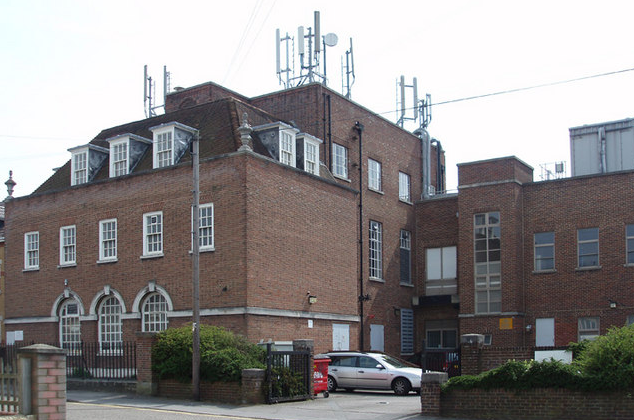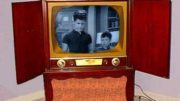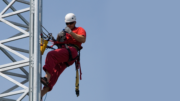“What’s the best TV antenna for Chicago?” Even though the places change, we get this question a lot here at Solid Signal. The truth is, there’s no such thing as a “Chicago antenna,” or an antenna that’s best suited for any other city, village, or town. Where you live does factor into your choice of TV antennas, but not the way you might think. If you’re here, you already know that the folks here at Solid Signal are the online TV antenna experts. We’ve recommended the antennas based on four important factors. We’ll share the factors that go into our expert antenna recommendations.
Distance from Local TV Towers
Make no mistake, where you live is important to what type of antenna you should get. It’s not the city you live in as much as it is where you live in that city. Let me explain what that means. Nearly every city, township, and village have local TV transmitters. In big cities, most of those transmitters are atop the tallest skyscrapers. In rural areas, the transmitters are atop towers spread out across the area. This is important.
The distance between your home and the local transmitters is a huge factor for us. If you live within 10 miles of the transmitters, we might recommend an indoor antenna. If you live 30 miles outside of the city, we’ll probably suggest a long-range outdoor antenna. The lesson here is simple: how far you live from the transmitters is way more important than what city you live in.
Geography is Important, Too
Up above, I told you that how far you live from the transmitters is important. What’s in between those transmitters and your home is just as important. For example, 20 miles from the transmitters is close, but trees in the area could be a problem. Our antenna experts consider obstructions when they make a product recommendation.
So, what would we do if there are a lot of obstructions between your home and the TV transmitters? We might suggest getting a tower or tall mount to raise your antenna up above those trees. (Generally speaking, the higher the installation, the better the reception.) There are many other solutions depending on your specific situation.
VHF, UHF, or Both?
What type of antenna to get isn’t something that most would-be cord-cutters think about. That’s okay because we’re the TV antenna experts so you don’t have to be. The choice between a UHF, VHF, or combo antenna is extremely important. This determines what and how many channels you might receive.
UHF and VHF, what’s the difference? Well, VHF-Lo is a low-frequency wavelength (54-88 MHz) is channels 2-6. VHF-Hi (174-216 MHz) gives you channels 7-13. Channel 14 and above are UHF stations that operate in the 470-806 MHz frequency range. To make things more complicated, your station’s call sign – such as “channel 4” – might not be its actual channel number. This is due to something called the Program and System Information Protocol or PSIP for short.
So, which channels do you want? Most antenna manufacturers make VHF-only, UHF-only, and combo antennas. Generally speaking, many antennas reach VHF signal at shorter distances than UHF. For example, an antenna that can receive UHF at 50 miles might get VHF at 35 miles. (Other combo antennas receive both signals at roughly equal distances.) The antenna you need depends on your distance from the transmitters and which channels you want to get.
Homeowners Association Rules
Bom! Bom! Bom! If you own your home and aren’t part of a homeowners association (HOA), you can pretty much do what you want. If you rent or own a condo, you’re probably part of an HOA and subject to its rules. Most HOA’s don’t allow large roof-mounted antennas for two reasons:
-
They don’t want members drilling into the roofs of their homes.
-
Large, rooftop antennas are considered eyesores.
A federal law called the OTARD rule let’s you mount antennas of a certain size under specific conditions. We recommend you familiarize yourself with this rule before getting an antenna. You should also remember that we can help people in HOAs cut the cord.
There are several options for you to enjoy free local TV in your home. You could use mount your antenna on a balcony, use an indoor antenna, or a non-penetrating roof mount. The solution we recommend will be based on this and all the other factors mentioned above. Since each installation is different, every recommendation we make is a custom one.
Construction Materials
What’s your home made of? Believe it or not, this is very important if you plan on putting an antenna up in your attic. If you roof has metal studs, flex conduit, or a radiant barrier, you’re going to have a hard time getting signal in that attic. (Read: nearly impossible.) And if you have those fancy new weatherproof windows, you can forget hanging an indoor antenna inside one of them. The metal flakes in the glass will disrupt the very signal you’re trying to receive. Now, please don’t panic if your home has these things. There’s always a solution and we can help you find it.
Who Lives With You?
This actually might be the most important factor of all. Look, the term “cutting the cord” means exactly that; you’ll be cutting off your cable TV service for free local TV. If you have family members who are married to specific cable channels or shows, they might not be too happy about your decision to get rid of that. That’s why we urge all would-be cord-cutters to discuss this with their families BEFORE telling the cable company to “shove it” and buying a TV antenna. If everyone’s on board, we’re happy to help you!
There are Other Factors, But…
… We focused on these six because they have the most to do with where you live. They’re also the most important factors when choosing a TV antenna. Speaking of which, do you want to start enjoying free local TV at home no matter where you live? Let us make sure you get the right antenna for where you live. Just pick up the phone and dial 888-233-7563, or fill out this form for a custom antenna recommendation. One of our antenna experts will be in touch!





